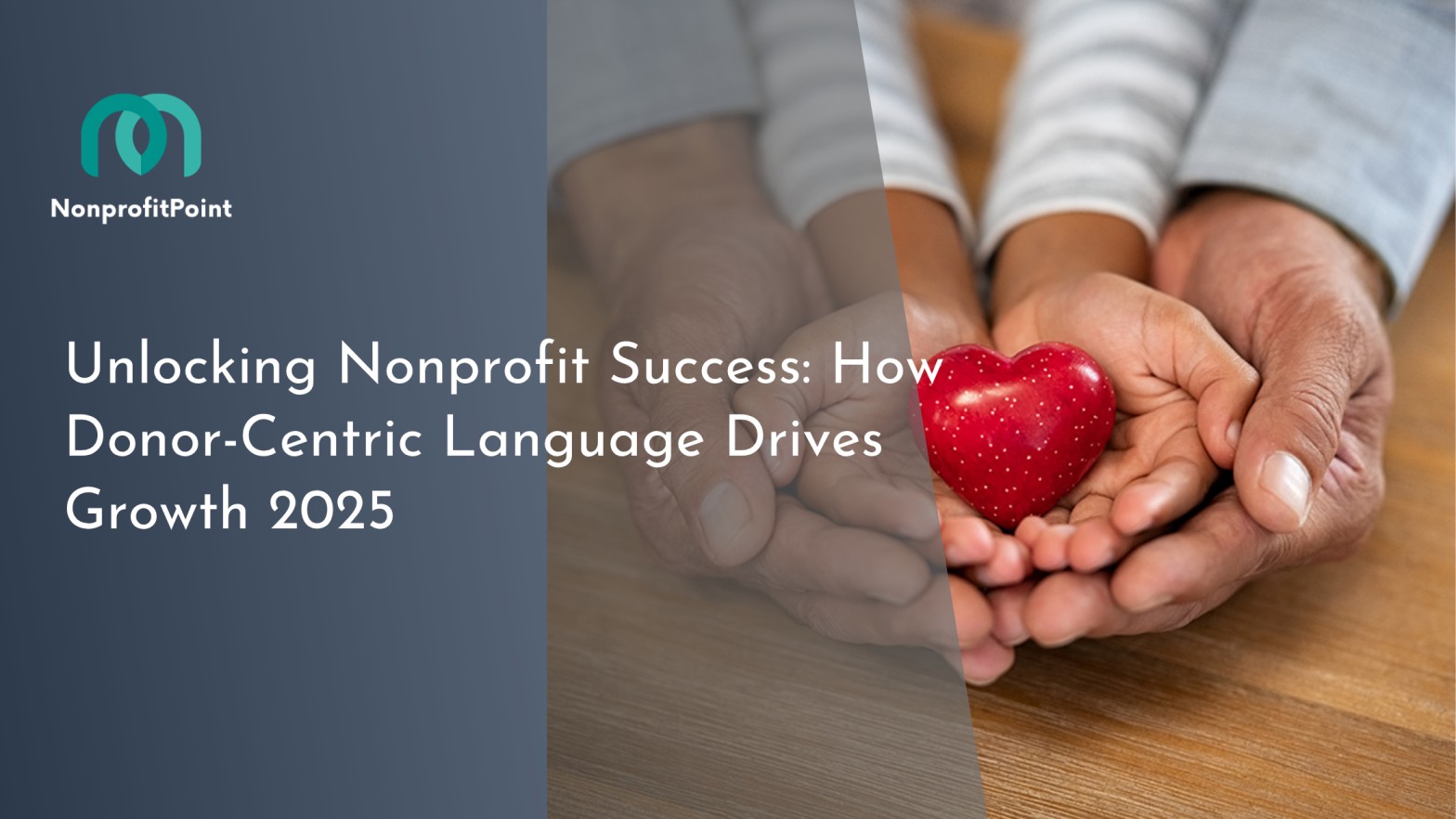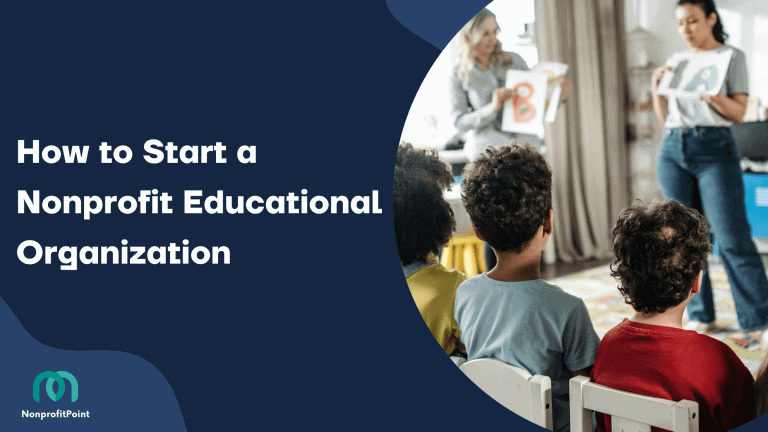Unlocking Nonprofit Success: How Donor-Centric Language Drives Growth 2025
Nonprofit fundraising is a difficult, but necessary, part of the organization’s work. It allows them to provide the services and programs that they do. But how can your nonprofit fundraising efforts be more successful?
One way to boost your success is to use donor-centric language in all of your communications. This includes emails, social media posts, and website content. By making your donors feel respected, you’re more likely to get their donations in the future.
Here are some ways to incorporate donor-centric language into your nonprofit’s messaging strategy.
- What is a Donor-Centric Language?
- Why Donor-Centric Language is Important for Nonprofits
- How do you use donor-centric language in your nonprofit strategy?
- How to talk to donors using donor-centric language
- How to write a message that uses donor-centric language
- The Importance of Including Donor Stories
- The benefits of writing & communicating with donor-centric language
- The Do’s and Don’ts with donor-centeric language
- Final Thoughts
What is a Donor-Centric Language?

Donor-centric language is all about talking to your donor in their language so they feel like they’re being heard. This type of language focuses on understanding what motivates them and what drives their decision making. It helps nonprofits do a better job at setting themselves apart from other organizations.
Why Donor-Centric Language is Important for Nonprofits
There are many benefits to using donor-centric language. Some of those benefits include making your donors feel more respected, which increases the likelihood that they will donate in the future. You’ll also be able to improve your nonprofit’s image by focusing on thanking donors and encouraging them to give more.
When you’re writing an email, social media post, or website content, it’s important to use language that appeals to your donor base.
Here are some examples:
- “This project is made possible by our generous supporters.”
- “We sincerely thank all of our donors for their support.”
- “Every day we work hard to make sure we’re providing the best experience for our donors.”
How do you use donor-centric language in your nonprofit strategy?
As a nonprofit organization, you need to stand out from the competition. You want to use donor-centric language because it will help your organization distinguish itself from other nonprofits and appeal to donors in their language.
If you want to use donor-centric language, start by understanding who your donors are and what matters most to them. Do they care about climate change? Education? Human rights?
Once you know what motivates potential donors, then you can use words they’ll find persuasive.
For example, if someone cares about human rights, you might tell them that 100% of your donations go straight to the cause. Or if someone cares about education, you might explain why your organization is committed to improving literacy rates around the world.
How to talk to donors using donor-centric language
When you use donor-centric language, you show that you understand why they are donating and what is important to them. You also invite a dialogue where the donor can tell you how your organization is performing or if there are any issues they have with your nonprofit.
So how can you start using donor-centric language? Here are some tips:
1) Use the word “you” as often as possible when talking to your donors. This personalizes the communication and makes it seem like they are being heard.
2) Keep it simple! Donors don’t want long emails or lengthy explanations of everything that’s going on at your nonprofit – be concise with information so it doesn’t overwhelm them.
3) Write in an active voice, not a passive voice! Active voice sounds more authoritative than passive voice and creates more urgency. Passive voice is less compelling because readers can’t tell if it’s addressed to them or not.
4) Be transparent about why people should donate – this ensures transparency in an era where trust for nonprofits is declining due to recent scandals.
How to write a message that uses donor-centric language
1. Put yourself in the donor’s shoes.
Start by trying to put yourself in the donor’s shoes and considering how they would feel when reading your message. Ask yourself what questions they might have, what concerns or fears they might have, and how you would respond if you were talking to them face-to-face.
2. Be respectful of the donor’s time.
We know how important it is to respect someone’s time so that they don’t feel like we’re wasting it–but it’s just as important when writing a message to donors. People don’t want to spend more than two minutes reading an email, so keep your message short and concise. Using bullet points will help keep things clear and concise, while still answering all of the most important questions that they might be asking themselves.
3. Share personal stories of success from people who’ve been helped by your organization
The happier donors are with your nonprofit, the more likely they are to donate again in the future!
4. Use strong copywriting techniques
Instead of saying “I’m going” say “I plan on going.” Instead of saying “you can make a difference” say “you’re already making a difference!”
The Importance of Including Donor Stories

One of the most powerful ways you can incorporate donor-centric language into your nonprofit’s messaging strategy is by including stories from donors. Studies show that people are more likely to donate when they know about a cause and how it affects other people who are similar to them.
If you have a story about a donor or their story, share it! Sharing the full picture of your nonprofit with donors will make them feel respected and invested in your work. This gives them incentive to donate in the future.
It’s not just sharing stories, though. You also want to display donors’ names publicly on your website and in newsletters so they feel appreciated as well!
Here’s a great article on creating persuasive donor stories.
The benefits of writing & communicating with donor-centric language

- It’s more effective.
- It’s less likely to turn off your audience.
- It resonates better with your supporters and donors.
- You can use it for all types of messaging and campaigns, including fundraising emails, social media posts, and speeches.
- You can create a more personalized experience for your donor or audience member by using donor-centric language.
- Using donor-centric language helps you articulate values, priorities, and motivations that are important to the organization or nonprofit in question, which can make you more authentic as a brand while also being more appealing to potential donors, volunteers, and voters!
The Do’s and Don’ts with donor-centeric language

- Do provide your donor with a story that aligns with the ways they’ve been generous in the past. Research has shown that donors are more likely to give when you haven’t asked for money and provide them with a compelling story about why their contribution is needed now.
- Don’t use guilt-inducing phrases like “you owe it to those who need us most” or “otherwise, no one will donate.” That type of language can make people feel uncomfortable and resentful instead of giving generously.
- Do share success stories of how donors have helped in the past. People often want to know what their contribution will be used for before donating.
- Don’t send an email asking for help without any other content besides a link to donate on your website–that’s not enough information!
- Do focus on the benefits that come from giving–more than just financial ones! This goes along with donor-centric language by focusing on understanding your donor and their motivations behind donating.
- Don’t use words that trigger resistance such as “request” or “demand.” Words like these may seem more appropriate for programs targeting disadvantaged populations, but they’re better left out of messaging for general audiences.
Final Thoughts
Using donor-centric language is an important step in any nonprofit’s strategy to grow and succeed. The language you use in your communications with donors can have a big impact on the success of your fundraising efforts.
Make sure you have a donor-centric language that resonates with your audience. This means speaking to your donors and potential donors in a way that feels personal and demonstrates your passion.
For many nonprofits, the thought of changing their language seems like a daunting task. But it doesn’t have to be. Start by asking your donors what they want and need from their experience with your organization. This will help you tailor your message to match their needs and get the results they want to see.






